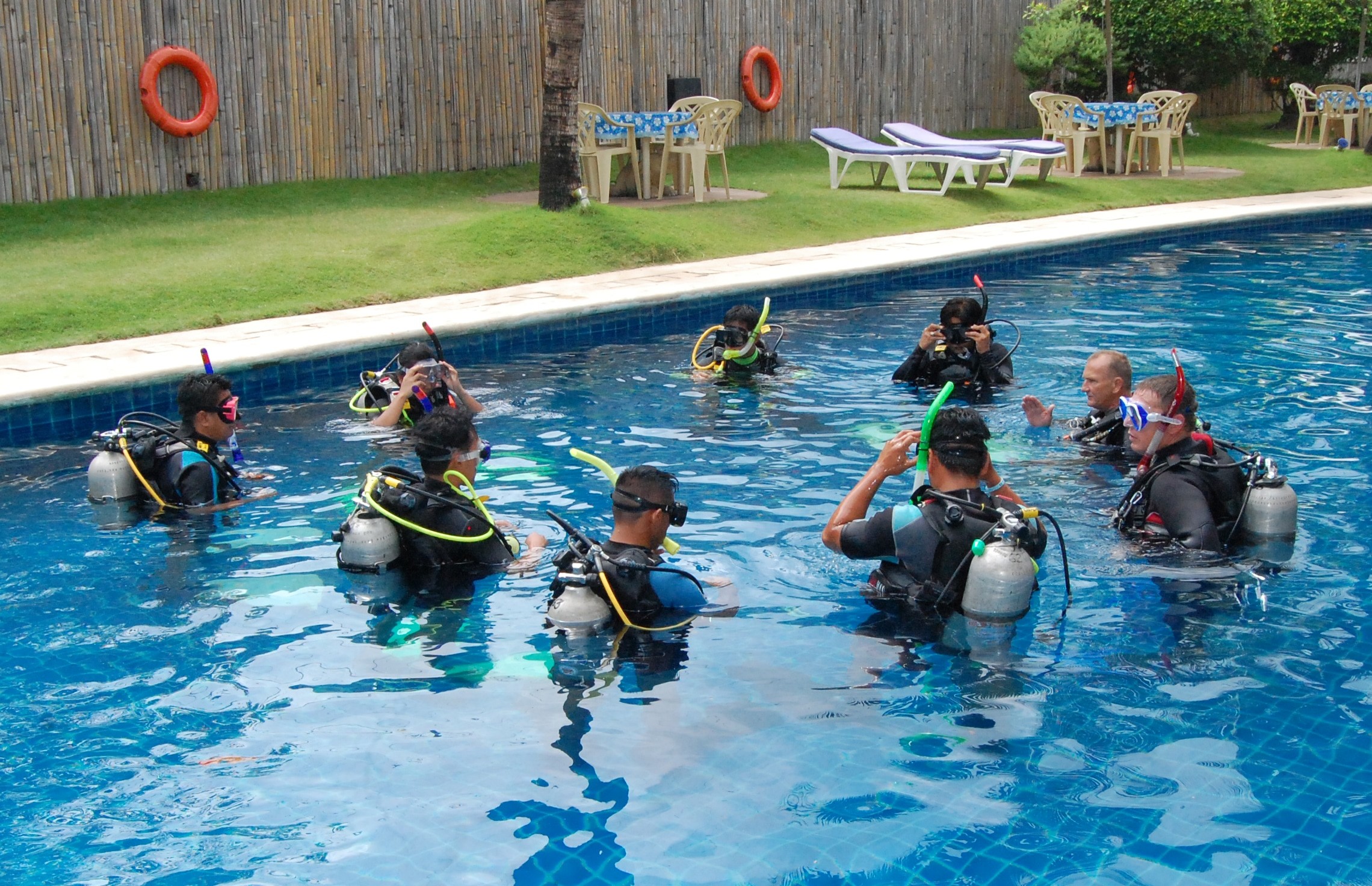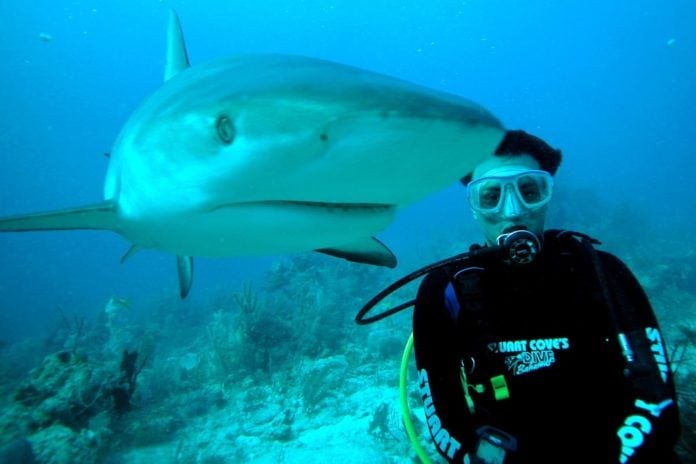Okay a show of hands, how many of you divers have heard the following from a friend or relative?
“Oh My God, you are going scuba diving!! Are You Suicidal?”
I am sure we all have in one form or another. Last week, I had a friend ask me what my plans were for the weekend and I told her I was planning a shallow dive on a reef to take some photographs. I explained it was only 12 meters deep. Her reply was in the OMG style and she even said she would pray for my safety. Sadly this is a common type of reaction from people who have never experienced diving and are not familiar with the risk management that is an ingrained part of your diving skills. This article is not so much for the experienced diver but more as a reference you can share with friends after they react like you are taking too many risk. Those thinking of becoming a certified diver might also learn from it or share with those opposed that they learn.
The Potential for Injuries and Death
In the early days of scuba diving up to the mid 1960s, scuba diving was viewed as a high risk male orientated activity. The rate of serious injuries and even death was very high. Equipment was often adapted from other uses. A Pioneering diver’s kit often was home made equipment with just a tank and regulator purchased from a reputable manufacture. Flotation devices were only used at the end of the dive and the Mae West flotation horse collars that WWII pilots use were very common. Equipment failure was also common. The risk associated with diving were not well understood by the scientific communities and information on those that were understood was not readily available to divers.
It was common for early divers to experience a case or two of the bends. Mild cases were very common and generally accepted as something routine. The bends are a slang term for Caisson’s disease which we now call decompression sickness (DCS). Caisson’s disease was discovered in the 1800s as it affected worker that were in pressurized caissons building footings for bridges. A caisson would be place around the point where a footing was to be built extending to the surface. The water would be pumped out and the air compressed to keep water from leaking in. Workers entered the device by way of an airlock at the surface. It was discovered back then that if the workers paused at different depths on their return to the surface, the workers had milder or no symptoms. Like the workers, the divers just accepted it as a risk.
Medical specialist consider DCS a subclass of Decompression Illness (DCI) which also includes Arterial Gas Embolism, or AGE. AGE is most often caused by a pulmonary barotrauma, that is where the pressure in the lungs causes it to burst.
The Result of Training
Today’s diver is a world removed from those pioneers. The scuba diving industry has evolved greatly since those early days and innovations in diving equipment has made equipment failure a rare event. The BCD, Buoyancy Compensation Device alternately called the Buoyancy Control Device, allows the diver to maintain neutral buoyancy throughout a dive, reducing the risk of a diver ascending too rapidly to the surface. This is a factor in DCS.
Today’s diver is also well trained to understand the risk of diving and more importantly how to manage them. The greatest enemy of the scuba divers is not the spear gun toting scuba diver of Sea Hunt and James Bond movies nor the man eating shark portrayed in many movies, it is pressure. As we descend into the water, the pressure around us increases. Our body adapts to the changes accepting larger quantities of Nitrogen into our blood stream and tissues eventually it may reach a point of saturation. As the pressure around the diver decreases the body will start getting rid of the extra nitrogen it has absorbed. If a diver returns to the surface with a high level of nitrogen in their tissues, this can trigger DCS. The dive industry and the scientific community have developed tables that prescribe the depth a diver can dive to and how long they can stay at those depths.

Called Non-decompression limits (NDL) these tables guide divers to plan dives that will result in the divers return to the surface with an acceptable level of nitrogen in their tissues. Divers are trained to understand these dive tables and to maintain a rate of ascent that is slow enough to allow the off gassing of nitrogen as they head to the surface. The use of dive computers by many divers allow them to judge their exposure risk in real time and to monitor the rate of ascent.
AGE represents about 10% of the DCI incidents. It is found to occur when divers make a rapid ascent or when they hold their breaths. Both of these points are extensively covered in dive training.
While DCI was very common in the early days thanks to a better understanding and training incidents of DCI happen in three and four cases reported for every 10,000 dives. Note that only 6% are fatal.
Safety Comparison
Comparing apple to oranges is one of the problems when talking about dive safety risk. Sometimes it is difficult to compare different activities due to determining the numbers of people involved. Accident rates for scuba diving can be expressed as a percent of dives or a percent of divers. Both of these measurements are at best estimates. The risk factors for diver are often quoted as 1 in 34,000 Scuba divers or 1 in 200,000 dives. Using the 1:200,000 number is best for comparisons as that relates better to the individual.
Numbers like this are hard to understand so it easier to relate the risk compared to things people do without thinking of risk. A medical research organization has provided this information. In American High School football is very popular. American football has a risk factor of 1 in 182,184 while football is 1 to 103,187 according to a German study. Children and some adults love horseback riding. You can expect one death in every 175,418 one hour riding sessions. You will also risk 10 to 20 times that number in serious head injuries over the same number of sessions. During Marathon races, 1 in every 126,626 runners die of heart attacks. When you look at the numbers you can see that the properly trained diver has a much lower risk of death than many popular activities.
One stat that you might mention with great care, a women scuba diver is more likely to die giving birth than scuba diving. Maternal deaths varies however they average 1:8000.
Sharks
Thanks to movies like Jaws and media sensationalize of the few shark attacks that do happen, to most non-divers, sharks are seen as a major risk. In reality, many diver seek out sharks to dive with. Marine life needs to be respected, and if you do not harass marine life your chances of being attacked is very low. If a shark feels threatened it will react and defend itself. In 2015, there were 164 shark attacks that the International Shark Attack File investigated. Their report gives a clear overview of the risk of shark attacks. Of the 164 incidents, 98 were classified as unprovoked. The classification “Provoked attacks” includes things like divers trying to ride a shark and spear fisherman fighting with a shark over speared fish. “Unprovoked attacks” are defined as incidents where an attack on a live human occurs in the shark’s natural habitat with no human provocation of the shark. Only 6 of the 98 unprovoked attacks resulted in death. In 2015, no divers were attacked by sharks. Shark attacks happen more frequently on surfers and other water board sports. The general outline and turbulence of the water around these individuals can cause the shark to mistake them for sea lions or seals, a tasty snack for a shark.
Generally sharks are a bit on the shy side and really do not want to get close to the bubble noises a dive creates.
How Safe, Really, is My Scuba Diving Friend While Diving
If your friend is properly certified and dives within the limits of their training and skills, scuba diving is one of the safest ways to spend a day in the outdoors. If you still doubt that, then do a discovery dive and get a taste of what they are experiencing.

